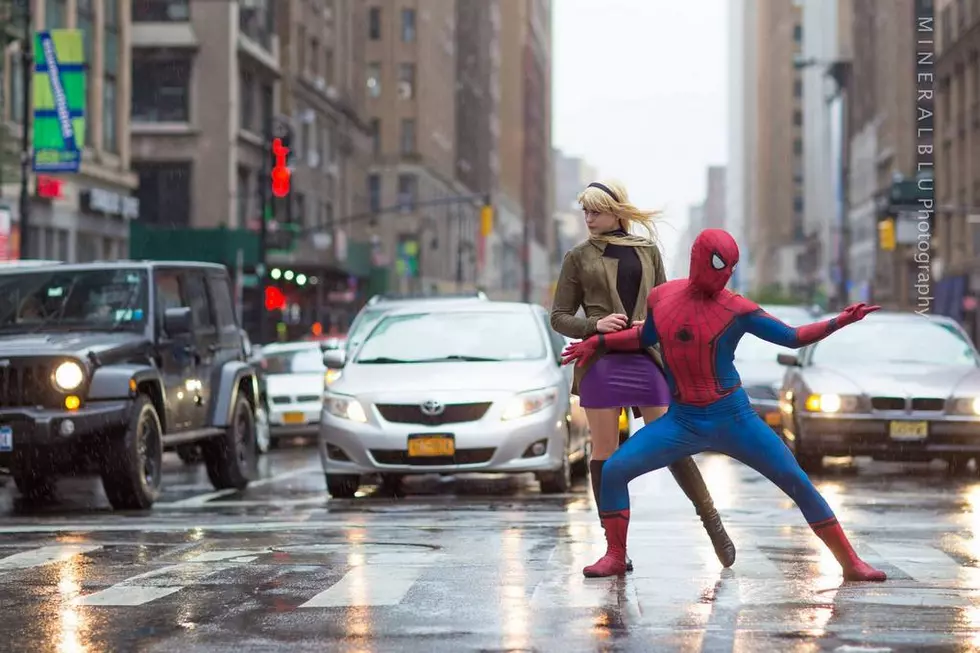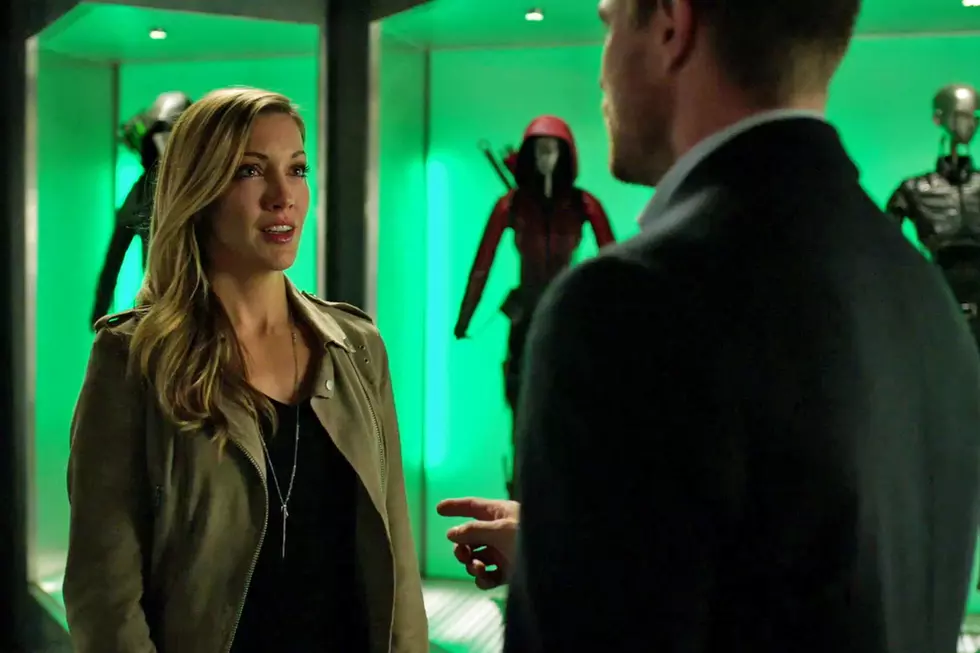
The Evolution of the Green Lantern: Best Green Lantern Stories by Decade
Many of comics’ most popular heroes have been around for decades, and in the case of the big names from the publisher now known as DC Comics, some have been around for a sizable chunk of a century. As these characters passed through the different historical eras known in comics as the Golden Age (the late 1930s through the early 1950s), the Silver Age (the mid 1950s through the late 1960s), the Bronze Age (the early 1970s through the mid 1980s) and on into modern times, they have experienced considerable changes in tone and portrayal that reflect the zeitgeist of the time.
With this new feature we’ll help you navigate the very best stories of DC Comics’ most beloved characters decade by decade. This week, we’re taking a look at the Green Lantern.
1940s: “Lantern and Dickles Are Invincible”
Comic Cavalcade #6, by Alfred Bester and Paul Reinman
The original Green Lantern was engineer Alan Scott, created by writer/artist Martin Nodell, with contributions and developments from writer Bill Finger. After fashioning a magic ring from a meteor powered by a mystical green flame, Alan Scott featured in stories that straddled the genre lines between fantasy, science fiction, mystery, crime, and humor. The original Green Lantern was joined on many of his adventures by roughneck cab driver Doiby Dickles, and later by Streak the Wonder Dog, who would prove so popular that the latter portion of the first Green Lantern volume saw Alan Scott playing second fiddle to his own canine companion.
The story selection here is an uncharacteristically meta-fictional story in which the writer, serving as narrator, proposes a number of hypothetical story scenarios in order to prove to his wife that Green Lantern and Doiby Dickles got out of sticky situations through skill and determination and not just sheer luck.
The original Green Lantern's adventures can be found in the Golden Age Green Lantern Archives.
Best of the rest: “The Origin of Green Lantern” (All-American Comics #16), “The Sign of the Green Lantern” (All-American Comics #17), “Meet Doiby Dickles” (All-American Comics #27), “Handsome John Riley” (Comic Cavalcade #2), “The Living Graveyard of the Sea” (Green Lantern vol 1 #3), “The Invisible World” (Green Lantern vol 1 #22)
1950s: “Summons from Space”
Showcase #23, by John Broome and Gil Kane
The original Green Lantern series was canceled in 1949, but after the success of the rebooted Silver Age Flash in 1956, it was decided to launch a new version of the Green Lantern with the science fiction trappings that were so popular in the atomic age. After three tryout issues in the pages of Showcase, new Lantern Hal Jordan was given his own title, which for over a decade was created exclusively by writers John Broome and Gardner Fox and artist Gil Kane.
The fact is, there were literally only two issues featuring Green Lantern in the whole decade of the 1950s, so the choice for best was little more than a coin flip. I chose the second issue, because it featured elements that began to expand the Green Lantern mythos: Hal's first costumed villain, his first trip into space, the establishment of the Hal/Carol Ferris/Green Lantern love triangle, and the first hints at the existence of the Guardians of the Universe.
Green Lantern's adventures from the 1950s and 1960s can be found in the Showcase Presents Green Lantern volumes.
Best of the rest: “SOS Green Lantern”/”Secret of the Flaming Spear”/”Menace of the Runaway Missile” (Showcase #22)
1960s: “The Battle of the Power Rings”
Green Lantern vol 2 #9, by John Broome and Gil Kane
The 1960s saw the vast expansion of the potential for Green Lantern stories as Broome, Fox, and Kane fully embraced the Space Age. This decade saw the introduction of the Guardians, alien members of the Green Lantern Corps such as Tomar Re, crossover stories with the Flash, raucous comedic adventures featuring Hal's brothers, and of course, the addition of recurring villains such as Hector Hammond, Star Sapphire, and Major Disaster.
The most notable of these villains, of course, was Sinestro, the evil former Green Lantern who wields his own yellow ring fashioned by the Weaponers of Qward. Broome wrote a trio of stories with Sinestro that firmly established him as Hal's main nemesis; “The Battle of the Power Rings” is the second of these stories following Sinestro's introduction in issue #7, and it serves in some ways as the culmination of everything that had happened in the book up until that point.
Best of the rest: “The Day 100,000 People Vanished” (Green Lantern vol 2 #7), “The Strange Trial of Green Lantern” (Green Lantern vol 2 #11), “The Spy Eye That Doomed Green Lantern” (Green Lantern vol 2 # 17), “The Duel of the Super-Heroes” (Green Lantern vol 2 #13), “Catastrophic Crimes of Major Disaster” (Green Lantern vol 2 #43), “Prince Peril's Power Play” (Green Lantern vol 2 #45), “Green Lantern Lives Again” (Green Lantern vol 2 #47), “Earth's Other Green Lantern” (Green Lantern vol 2 #59)
1970s: “Hard Travelin' Heroes”
In the early 1970s, Green Lantern was joined in his title by Green Arrow in a critically acclaimed series of stories that used the contrast of straight-arrow space cop Hal Jordan and bleeding heart activist Oliver Queen to explore the social issues that would be hallmarks of the Bronze Age. Despite the acclaim, these stories didn't sell that well, and combined with Neal Adams running behind on deadlines, the book was put on hiatus for a number of years while Green Lantern and Green Arrow continued as a backup feature in Flash.
This series of stories features “Snowbirds Don't Fly” (aka the “blue skins and purple skins” story), the introduction of John Stewart as a new Green Lantern, and the famous issue in which it is revealed that Green Arrow's sidekick Speedy “IS A JUNKIE!!!” While some of the storytelling and approaches to more serious issues may not hold up for modern readers, the influence and craft behind these issues is impossible to deny.
Best of the rest: “Those Who Worship Evil's Might” (Green Lantern vol 2 #90), “Lure for an Assassin”/”Terminal for a Tragedy” (Green Lantern vol 2 #94-95), “Mission of No Return” (Green Lantern vol 2 #123)
1980s: “Mogo Doesn't Socialize”/”Tygers”/”In Blackest Night”
Green Lantern vol 2 #188, Tales of the Green Lantern Corps Annual #2 and #3, by Alan Moore, Dave Gibbons, Kevin O'Neill, and Bill Willingham
In the 1980s, the focus of the book shifted away from Hal Jordan a little as John Stewart became the focus of the title for a time before the book was renamed Green Lantern Corps after issue #200, focusing on a team of Lanterns on Earth. The series would keep this focus until it ended in the wake of Crisis on Infinite Earths in 1988.
The selection for the 1980s is a trio of short back-up stories by Alan Moore that, despite being only a handful of pages each, managed to affect the Green Lantern mythos to this very day, introducing concepts and characters that have played a significant role in many recent stories, including Mogo, Sodam Yat, and Rot Lop Fan, the F-Sharp Bell.
Best of the rest: “Sector 2814” (Green Lantern vol 2 #172-186), Tales of the Green Lantern Corps #1-3, “Setting Up Shop” (Green Lantern vol 2 #201-205)
1990s: “Emerald Dawn”
Green Latern: Emerald Dawn #1-6, Green Lantern: Emerald Dawn II #1-6, by Keith Giffen, Gerard Jones, MD Bright, and James Owsley
After Crisis on Infinite Earths, many of DC's major characters saw their origins and histories rebooted to adjust to the changes in DC continuity and to appeal to supposedly more sophisticated modern readers. Superman got Man of Steel, Batman got Year One, and Green Lantern got Emerald Dawn, two mini-series that re-established and expanded on Hal Jordan's origin as a Green Lantern and his first encounters with Sinestro.
The mid-'90s saw sales on Green Lantern falling, and so to shake things up, Hal was driven insane by the events of Reign of the Supermen and replaced as the Green Lantern by a young graphic artist named Kyle Rayner.
Best of the rest: “Circle of Fire” (Green Lantern: Circle of Fire #1 & 2, Green Lantern/Adam Strange #1, Green Lantern/The Atom #1, Green Lantern/Firestorm #1, Green Lantern/Power Girl #1, Green Lantern/Green Lantern #1), “Emerald Twilight/New Dawn” (Green Lantern vol 3 #48-55), Ganthet's Tale, “Mosaic” (Green Lantern vol 3 #14-17, Green Lantern: Mosaic #1-18), Flash and Green Lantern: The Brave and the Bold #1-6, JLA Year One #1-12
2000s: DC: The New Frontier
Kyle Rayner would enjoy some success as the main (and, in fact, only) Green Lantern for a number of years before Hal Jordan would return as the “main” Green Lantern. Fortunately, the Green Lantern Corps concept allows for other Lanterns such as John Stewart, Guy Gardner, and Kyle Rayner to all exist alongside one another.
That said, the best Green Lantern book of the decade is still New Frontier. The book is a beautifully illustrated rumination on the shift from the Golden Age of Comics to the Silver Age as a reflection on changes in American history and politics in the real life years between the late 1950s and early 1960s. But even with all that, the backbone of the book is a Hal Jordan story, as what hero could better represent Kennedy's America than a playboy with ambitions of landing on the moon?
And, look, I hear you grumbling. Yes: Rebirth and Sinestro Corps War and Blackest Night were all exciting stories that exploited Green Lantern continuity to its fullest and brought a ton of new readers to the title, but if you think there's even a single panel in any of those stories that is better or more affecting than the scene in which Hal tries to remember how to say “the war is over” in Korean, I am officially calling you a liar.
Best of the rest: “Sinestro Corps War” (Green Lantern: Sinestro Corps Special #1, Green Lantern vol 4 #21-25, Green Lantern Corps vol 2 #14-19), “Secret Origin” (Green Lantern vol 4 #29-35), Willworld, Green Lantern Corps: Recharge #1-5, Green Lantern: Rebirth #1-6
And that's it for the decades we've experienced so far! The 2010s are halfway over; we'll have to see who comes out on top in five years! Will anything beat Red Lanterns: Blood Brothers? We'll see!
More From ComicsAlliance









